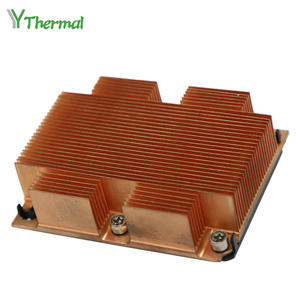
A heat sink is a general term for a series of devices used to conduct and release heat. Radiators mainly include heating radiators, computer radiators, and car radiators. Among them, heating radiators can be divided into several types according to their materials and working modes, and computer radiators can be divided into several types according to their uses and installation methods. The role of the radiator is very large, it can discharge the heat well, so that the internal heat is reduced to achieve the effect of cooling. A good radiator is more efficient to use, and the performance of the radiator is mainly determined by the material it is made of. So, what are heat sinks made of?

Radiators of different materials:
Steel radiators: mainly include: steel double-column, steel three-column, steel four-column, steel five-column, steel six-column radiators; iron sheet radiators are basically eliminated, and now have various shortcomings, It is not very good to use. When customers choose to use it, they must pay attention to the actual situation. Of course, cheap price is also an advantage. Although people are more concerned about aesthetics and cost performance, price is sometimes an advantage.
Aluminum radiators: die-cast aluminum radiators, steel-aluminum composite radiators, and all-aluminum radiators; in terms of heat dissipation, silver and copper are better than aluminum, but these two radiator materials will make the radiator The price has become particularly beautiful, and this beauty is for most people, so the heat dissipation effect of steel is better than that of aluminum, so there is a good reason for people to choose aluminum radiators. So what are the benefits of choosing aluminum? The situation can be modularized and customized for combined radiators. Moreover, aluminum can be cast as a whole at one time, which can effectively solve the problem of weld leakage.
Copper-aluminum composite heat sink, all-copper heat sink: Copper conducts heat quickly, but its heat dissipation performance is not good, so most CPU heat sinks are copper-bottomed aluminum sheets. The price of an all-copper radiator is also very expensive, so many people are discouraged.
Vacuum superconducting radiator: Vacuum superconducting radiator is based on the principle of phase change heat transfer of superconducting medium. It is mainly composed of the high vacuum body of the radiator, a special anti-rust heat medium composite tube and a fast-heating, anti-freezing and high-efficiency heat transfer composite medium. (superconducting liquid) and other components.
Cast Iron Radiators: Compared to steel radiators, cast iron radiators have very good corrosion resistance. Its alkali resistance is much better than steel radiators, so cast iron radiators have a longer service life than steel radiators. In terms of weight per unit area, the weight of cast iron radiators is 2.6 to 9 times that of steel radiators. But in terms of heat dissipation effect, the steel radiator per unit surface is 2~4.8 times that of the cast iron radiator. These two reasons determine that cast iron radiators can only be used in multi-storey buildings with bottom heat dissipation effect.
Generally speaking, aluminum radiators are widely used, not only for fast heat dissipation, but also for their low price, so they are chosen by many people.